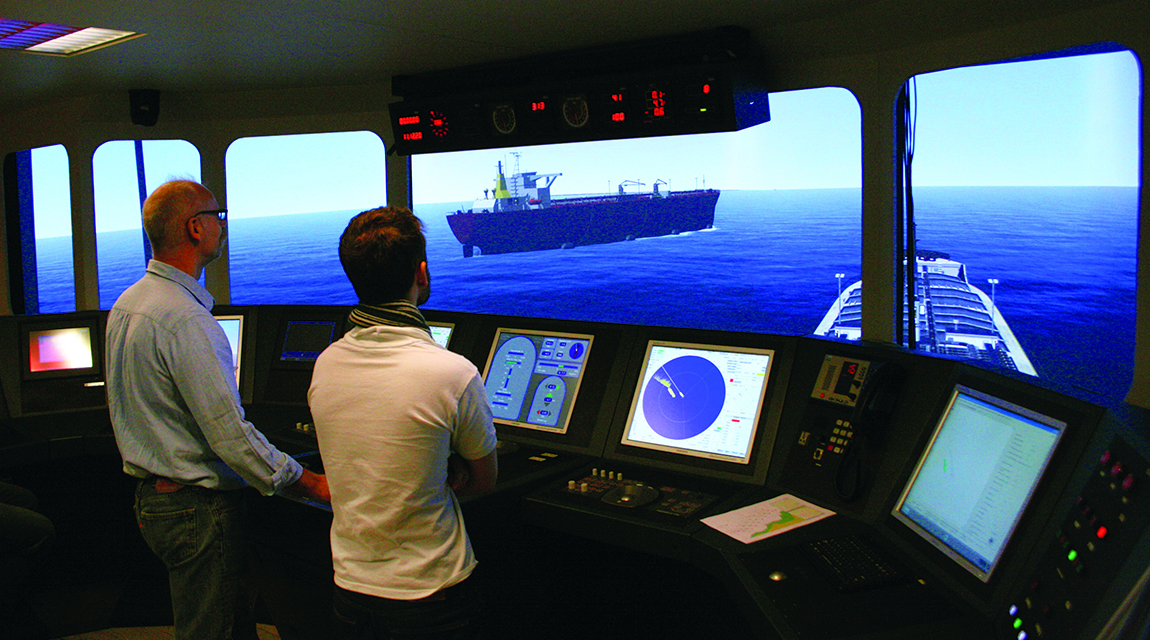Training in LNG Ship To Ship operations
The training will improve the ability to approach and go alongside in an STS operation with or without tug assistance.
Goals and objectives
LNG Ship to Ship (STS) training focuses on conducting STS operations safely and efficiently using specific vessels. The course aims at promoting the safety of people and property at sea and protecting the marine environment by improving captains’, officers’ and mooring masters’ knowledge of STS operations with LNG vessels as well as improving their practical manoeuvring skills by use of coupled simulators so that the captains, officers and mooring masters can train together in the same environment.
Course description
The course focuses on the general principles of STS operations, including ship handling and manoeuvring, emergency aborting, and safe watch keeping. Moreover, the course participants will be trained in pre-planning including contingency planning, communication strategies during approach, mooring, and un-mooring. During the exercises the participants will gain skills within ship handling theory and ship/ship interaction and will become familiar with the use of operational and safety checklists.
The course consists of theoretical lectures, simulator exercises, and debriefings using sophisticated replay tools.
The simulator exercises will give an in-depth understanding of environmental factors such as wind and current which will be changed and slowly increased until the operational limits for the STS operation are met. This kind of training ensures that a high and uniform level of competence is achieved, and all the trainees will have been through the same pre-defined curriculum. The simulations will be set up using two simulators; one simulator for each vessel involved in the STS operation.
Gains
After completing the course, the participants will have a thorough knowledge of:
- Handling a specific vessel during various operations while considering the limitations of the specific vessel
- Approaching and going alongside in an STS operation with 2 involved vessels with or without tug assistance
- Executing emergency manoeuvring with full or limited capability and with or without assisting tugs
- Manoeuvring in various weather scenarios
- Limitations in manoeuvring the specific vessel
- Manoeuvring strategies
- Physical elements influencing the manoeuvring of the vessel during STS operations
References: STCW including 2010 Manila amendments, 2017 edition. Table A-II/1.8 and Table A-II/3.5


